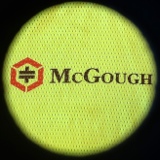Information
-
Conducted on
-
Prepared by
-
Company name
HOUSEKEEPING
-
Fire extinguishers (Distributed, In stands, Inspected Monthly)
-
First aid kits (Distributed, Filled adequately)
-
Adequate lighting (Common areas lit, Subs utilizing task lighting where needed)
-
Job site free of slips, trips and fall hazards (cords, steps, holes, rebar, frost, wet, etc.)
-
Stairways / walkways clear (cords, material, equipment off to the side or removed)
-
Debris cleared (dump carts used and emptied, etc)
-
Break areas orderly<br> (Food is in covered waste containers)
-
Floor openings (covered, fastened, labeled)
-
NOT APPLICABLE<br>
-
Sprinkler shutoff located/labeled/accessable
ELECTRICAL / UTILITY
-
Good Cords (look for knicks, cuts, grounds, strain relief, water resistance)
-
Temporary lighting guarded (light cages)
-
Temporary Electrical panels labeled and covered (checked monthly)
-
GFCI protection utilized on house power
HAND AND POWER TOOLS
-
Hand tools in good working order (good condition, good cords, etc)
-
All mechanical safeguards in use (equipment guards)
-
Tool drop protection used when working above people
-
Proper PPE while in use
MOBILE EQUIPMENT
-
Brakes, lights, signals, and alarms operative
-
Daily inspections filled out
-
Seat belts worn - LULLS, FORK TRUCKS, ETC.
-
Lifts - 100% tie off
-
Crane - protecting people from overhead loads
-
Rigging equipment inspected - tag showing
BARRICADES / GUARDRAILS
-
Guardrails 100% protecting the area where people are not tied off and is above 6'
-
Barricades affixed with proper signage
-
Floor openings planked or barricaded
-
Wall, roof openings covered or barricaded
-
Rooftops/edges protected<br> (100% guardrail or personal fall protection... no flagging unless discussed with safety)
LADDERS
-
Ladders in good condition<br> (stickers, rungs, feet, spreaders, rivets, fiberglass...)
-
Side rails extend 36 inches above landing for access to a level
-
Ladder not being used too close to the edge of a deck or opening (Rule of thumb: Height of the ladder +4')
-
Proper for job and secure
-
Step ladders fully open when in use
-
Placement of ladder safe<br>(tied off if necessary, clean/dry surface...)
-
Use of the ladder properly<br> (standing on the correct rungs, not leaned up stepladders, facing the correct way between the uprights...)
SCAFFOLDING
-
All scaffolds plumb and level
-
Are adequate sills and base plates being used
-
Are metal scaffold planks installed correctly with none extending past their end supports
-
Are wooden scaffold planks installed past their end supports no less than 6 inches and no more than 12 inches
-
Are guardrails including top and mid rail in place
-
To protect from falling objects, are toe boards or area barricaded below
-
Is there a scaffold tag and has it been inspected
-
Is their a safe access ladder, steps or equivalent means for safe access to the scaffold<br> (Step no greater than 24")
-
Is the scaffold rated for the proper weight capacity
FIRE PREVENTION
-
Are hot work permits in order if necessary
-
Is a fire watch monitoring the area
-
Propane tanks - barricade installed - labeled -( flammable,no smoking, fuel type)
-
Compressed gas cylinders secured- upright- protected from damage
PPE
-
Hard hats worn 100%
-
Gloves (worn and adequate for the work activity)
-
Face shields (used where required)
-
Welding hoods being worn in conjunction with hardhats safety glasses
-
Eye protection (worn and adequate for the work activity)
-
Respirators and masks utilized, when needed
-
High visible clothing in use, when needed
-
Safety harness and lanyards utilized with adequate anchorage points
MCGOUGH NOTES
-
Specific requests
-
Injuries or losses since last audit






